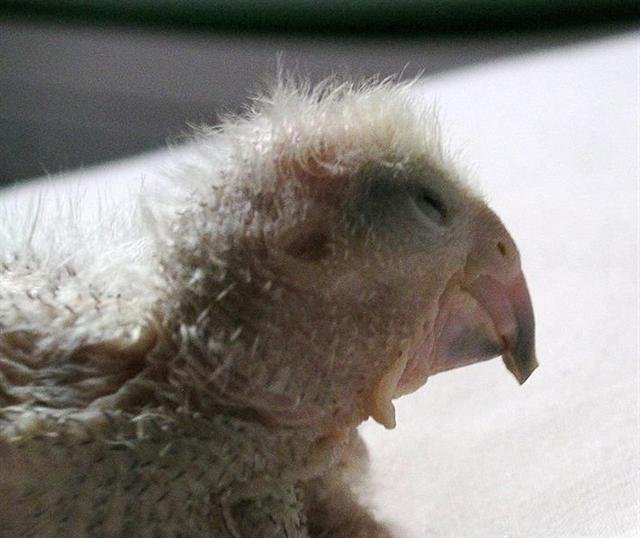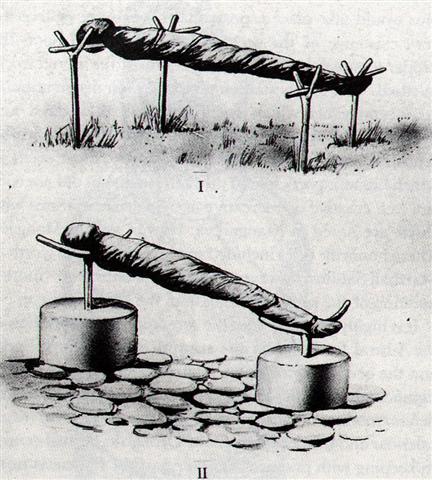Bb8.7
The B text is evidently beginning in
OCTOBER 1 (with Haedus II at the Full Moon). Glyph number 421 +
310 = 731 is one more than 2 * 365:

 |
 |
 |
 |
 |
 |
 |
|
Bb8-26 (310) |
Bb8-27 (366 * 2) |
Bb8-28 (733) |
Bb8-29 |
Bb8-30 (314) |
Bb8-31 |
Bb8-32 |
|
kua ka ko te Raa |
i vai te taketake |
ku kotia ko te henua |
kua haaati
hia ko te kava |
kava vere ki te henua |
kua haaati
hia ko te kava
- ma te hatu huri |
eko te henua |
|
Take.
The Marquesans are the only people who
own to a distinctive national name, and
retain a tradition of the road they
travelled from their original habitat, until
they arrived at the Marquesan Islands. They
call themselves te Take, 'the
Take nation'. Fornander. Take,
Tuvaluan for the Black Noddy (Anous
Minutes). The specific epithet
taketake is Māori for long established,
ancient, or original. In the Rapa Nui
mythology, the deity Make-make was
the chief god of the birdman cult, the other
three gods associated with it being
Hawa-tuu-take-take (the Chief of the
eggs) his wife Vie Hoa and Vie
Kanatea. Wikipedia. |
|
Dec 3 |
4 |
5 |
6 |
7 (341) |
8 (364 - 22) |
9 |
|
RIGHT
ASCENSION DAYS AT THE FULL MOON: |
|
HAEDUS II = η Aurigae
(75.9) |
5h (*76.1)
ε
Leporis (76.0),
CURSA (Footstool) = β Eridani (76.4),
λ Eridani (76.7)
*35.0 = *76.4 - *41.4 |
μ Aurigae, μ Leporis (77.6) |
ĸ Leporis (78.0),
RIGEL (Foot) =
β
Orionis
(78.1),
Flaming Star = IC405
(78.2),
CAPELLA = α Aurigae (78.4),
ο
Columbae,
τ
Orionis (78.8)
*37.0 = *78.4 - *41.4
THUBAN (α Draconis) |
λ Aurigae (79.0), λ Leporis (79.6), ρ
Aurigae (79.7)
ARCTURUS (α Bootis) |
Shur-narkabti-sha-iltanu-5 (Star in the Bull
towards the north)
σ
Aurigae (80.4), BELLATRIX (Female Warrior) =
γ
Orionis, SAIF AL JABBAR (Sword of the Giant)
=
η
Orionis
(80.7),
ELNATH (The Butting One) =
β
Tauri =
γ
Aurigae
(80.9) |
ψ
Orionis (81.1),
NIHAL (Thirst-slaking Camels) =
β
Leporis
(81.7) |
 |
|
June 4 (155) |
5 |
6 |
7 (157
+ 1) |
8 (181
- 22) |
9 |
10
(161) |
|
'May 8
(128) |
9 |
10 |
11 (131) |
12 |
13 |
14 |
|
"April
24 (114) |
25 |
26 |
27 |
28 |
29 |
30 |
|
APRIL
1 (91) |
2 |
3 |
4 |
5 |
6 |
7 |
|
+ 366 / 2
→ |
|
OCT 1
(274) |
2 |
3 |
4 |
5 |
6 |
7 |
|
"Oct
24 (297) |
25 |
26 |
27
(300) |
28 |
29 |
30 |
|
'Nov 7
(311) |
8 |
9 |
10
(314) |
11 |
12 |
13 |
|
Dec 4 (338) |
5 |
6 |
7 (340
+ 1) |
8 (364
- 22) |
9 |
10 |

... Now birds and fishes are born
under the sign of the Yin, but they belong to
the Yang. This is why birds and fishes both
lay eggs. Fishes swim in the waters, birds fly among
the clouds. But in winter, the swallows and
starlings go down into the sea and change into
mussels ...
There are 42 glyphs in line Bb8 and below are
the last 10 of them:
 |
 |
|
Bb8-33 |
Bb8-34 |
|
ko te rima kua
hakamata ia ki te kupega |
e tagata oo - ki te
purega e |
|
Kupega. He-tá i te
kupega, to weave (a net). Hopu
kupega, those who help the motuha
o te hopu kupega in handling the
fishing nets. Huki kupega, pole
attached to the poop from which the
fishing-net is suspended. Mata kupega,
mesh. Te matu'a o te kupega,
part of a net from which the weaving
started. Te puapua kupega, the
upper part of a fishing net. Tau
kupega, rope from which is hung the
oval net used in ature fishing.
Tuku kupega, a fishing technique:
two men drag along the top of a fishing
net doubled up, spread out on the bottom
of a small cove, trapping the fish into
the net. Vanaga.
Pure.
Cowrie (Cypraea caput
draconis); pure vaka, another
type of cowrie, which can float on the
sea like a diminutive boat (vaka).
Vanaga. 1. To pray, to supplicate,
invocation, prayer; hare pure,
church, chapel; tae pure,
irreverence; purega, prayer P
Pau., Mgv., Mq., Ta.: pure, to
pray. In Samoa, Tonga, Niuē,
Futuna, Uvea, pule
means to command. 2. A shell T. P
Pau.: hakapurepure, to dye, to
color. Mq.: pué, the porcelain
shell. Ta.: pure, a mark.
Purepure, spotted, dappled; ragi
purepure, dappled sky. Purepurea,
spotted. P Pau.: hakapurepure, to
dye, to color. Mgv.: purepure,
printed cloth; akapurepure, to
paint in different colors. Mq.:
puépué, covered with pale scars.
Ta.: purepure, spotted, dappled.
Churchill.
Pureva, rock, stone (small
enough to be thrown by hand). Vanaga.
Pureva,
to throw a stone. Ta.:
Pureva,
to be on the eve of going. Ha.:
puleva,
to float here and there. Churchill.
Pau.: Pure-hiva, a butterfly.
Mgv.: pure-rehue, id. Ta.:
pure-hua, a moth. Mq.: pure-hua,
id. Ma.: pure-hua, id. Churchill. |
 |
 |
|
Bb8-35 (740) |
Bb8-36 (320) |
|
kua vere koia ki te
ohoga |
o te vae |
 |
 |
 |
|
Bb8-37 |
Bb8-38 |
Bb8-39 |
|
mai tae topa te Raa |
ki to ua |
ai ka topa te Raa |
|
Topa.
1. To bend down, to drop to
the ground; to fall on a certain date.
2. To stop doing something, to drop;
ina ekó topa taau aga, do not stop,
keep doing your work. 3. To remain, to
be left over, to be unfinished; he
topa te kai, the food is not
finished, there is some left. 4. To come
to one's memory; i te aamu he topa te
vânaga tûai, in the legends old
words come to memory. 5. To remember, to
reflect (with mana'u as subject);
e-topa rivariva tokorua mana'u ki te
me'e nei, let the two of you think
carefully about this thing. Vanaga. 1.
Wine; topa tahaga, id. 2. To fall
in drops, to descend, to go down, to
abdicate; topa iho, to fall;
hakatopa, to knock down, to cause to
fall; hakatopa ki raro, to knock
down, to subjugate. 3. Childbirth,
abortion; topa te poki, to lie
in. 4. A feast, to feast. 5. To arrive,
to result; topa rae, newcome;
topa iho, to come unexpectedly;
topa ke, to deviate; topa no mai,
topa hakanaa, topa tahaga,
mau topa pu, unexpected; topa
okotahi, solitary; hakatotopa,
to excite, to foment. 6. Bad, low,
cheap, failure; igoa topa,
nickname; ariga topa, sinister,
sly, ill-tempered, to hang the head;
hakatopa, to disparage;
hakatotopa, irresolute. 7. (Of
upward movement) topa ki raro, to
scale, to surpass; hakatopa ki te ao,
to confer a dignity; hakatopa ki te
kahu, to spread a sail;
hakatotopa, to make a genealogy.
Churchill. |
|
 |
 |
|
hupee |
Bb8-41 (325) |
|
Evidence indicates that hupee
glyphs are located where 'time
stands still', when a new great
season is on its way to be born,
such as for instance at a solstice.
When the pendulum of time slows down
to a full stop it is because the old
season is dying away and a new one
lies ahead. This new season is
opposite to the previous one. When
the pendulum starts to move again it
goes in the other direction.
Visually it can be expressed as a
figure turned upside down:
 |
 |
joint in time |
 |
|
Ea2-15 |
Ea2-16 |
Ea2-17 |
 |
 |
 |
|
Gb1-5 |
Gb1-6 |
Gb1-7 |
The old season ends with number
16. In the 2nd list of place
names (in Manuscript E) item
number 17 has been given a
capital letter to indicate a new
season is on its way to be born:
|
13 |
ko te hereke a kino
ariki |
|
14 |
hatu ngoio a taotao ika. |
|
15 |
ara koreu a pari
maehaeha. |
|
16 |
hanga kuokuo a vave
renga. |
|
17 |
Opata roa a mana aia. |
|
18 |
vai tara kai u(a) a ngao
roaroa a ngao tokotokoa. |
|
19 |
hia uka a hakairiiri a
hakaturuturu. |
|
20 |
hanga ohiro a pakipaki
renga. |
Hanga Ohiro (number 20)
is at the end of the period
which begins with Ohiro,
the first night of a month. The
'bay of anchorage' (haga)
for the 20 nights to be counted
in a month (according to the
Gilbertese) is Hanga Ohiro.
However, if the counting begins
4 nights earlier (which the
Hawaiian moon calendar
apparently tells us to do), then
the 20 days to be counted in a
month will end at Hanga
Kuokuo (the 'white harbour'
of full moon).
Here (at number 16 / 20) the
'canoe of time' stops for a
while, and the hupee sign
presumably signifies: 'counting
time has stopped in order to
give birth'. In a month the
waning moon phase lies ahead and
likewise in a year its 2nd half
is about to begin.
|

|


















